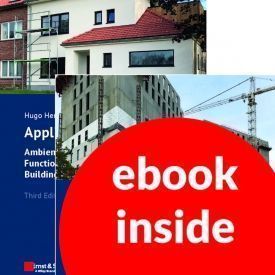Table of contents
BOOK 1 BUILDING PHYSICS
Preface
Units and Symbols
0 Introduction, History of Building Physics
1 Heat Transfer
1.1 Generalities
1.2 Conduction
1.3 Heat Exchange at Surfaces by Convection and Radiation
1.4 Building Related Applications
1.5 Problems and Solutions
2 Mass Transfer
2.1 Generalities
2.2 Air
2.3 Water Vapour
2.4 Moisture
2.5 Problems and Solutions
3 Heat, Air, and Moisture Combined
3.1 Why?
3.2 Material and Assembly Level
3.3 Whole Building Level
3.4 Problems and Solutions
4 Heat, Air, Moisture Material Properties
4.1 In general
4.2 Dry Air and Water
4.3 Thermal Properties of selected building materials
4.4 Air Properties
4.5 Moisture Properties
Postscript
BOOK 2 APPLIED BUILDING PHYSICS
Preface
Units and Symbols
Introduction, Historical Review
1 Ambient Conditions Out and Indoors
1.1 Overview
1.2 Outdoors
1.3 Indoors
Further Reading
2 Performance Metrics and Arrays
2.1 Definitions
2.2 Functional Demands
2.3 Performance Requirements
2.4 A short history
2.5 Performance arrays
Further Reading
3 Functional Demands at the Whole Building Level
3.1 In brief
3.2 Thermal, acoustical, visual and olfactory comfort
3.3 Health and Indoor environmental quality (IEQ)
3.4 Energy Efficiency
3.5 Durability
3.6 Economics
3.7 Sustainability
3.8 High performance buildings
Further Reading
4 Heat, Air, Moisture Metrics at the Building Assembly Level
4.1 Introduction
4.2 Air-tightness
4.3 Thermal transmittance
4.4 Transient thermal response
4.5 Moisture tolerance
4.6 Thermal bridging
4.7 Contact coefficient
4.8 Hygrothermal stress and strain
4.9 Transparent parts: solar transmittance
Further Reading
5 The Envelope Parts HAM Performances Applied to Timber-Frame
5.1 In general
5.2 Assembly
5.3 Performance evaluation
Further Reading
Appendix: Heat, Air, Moisture Material Properties
Index



